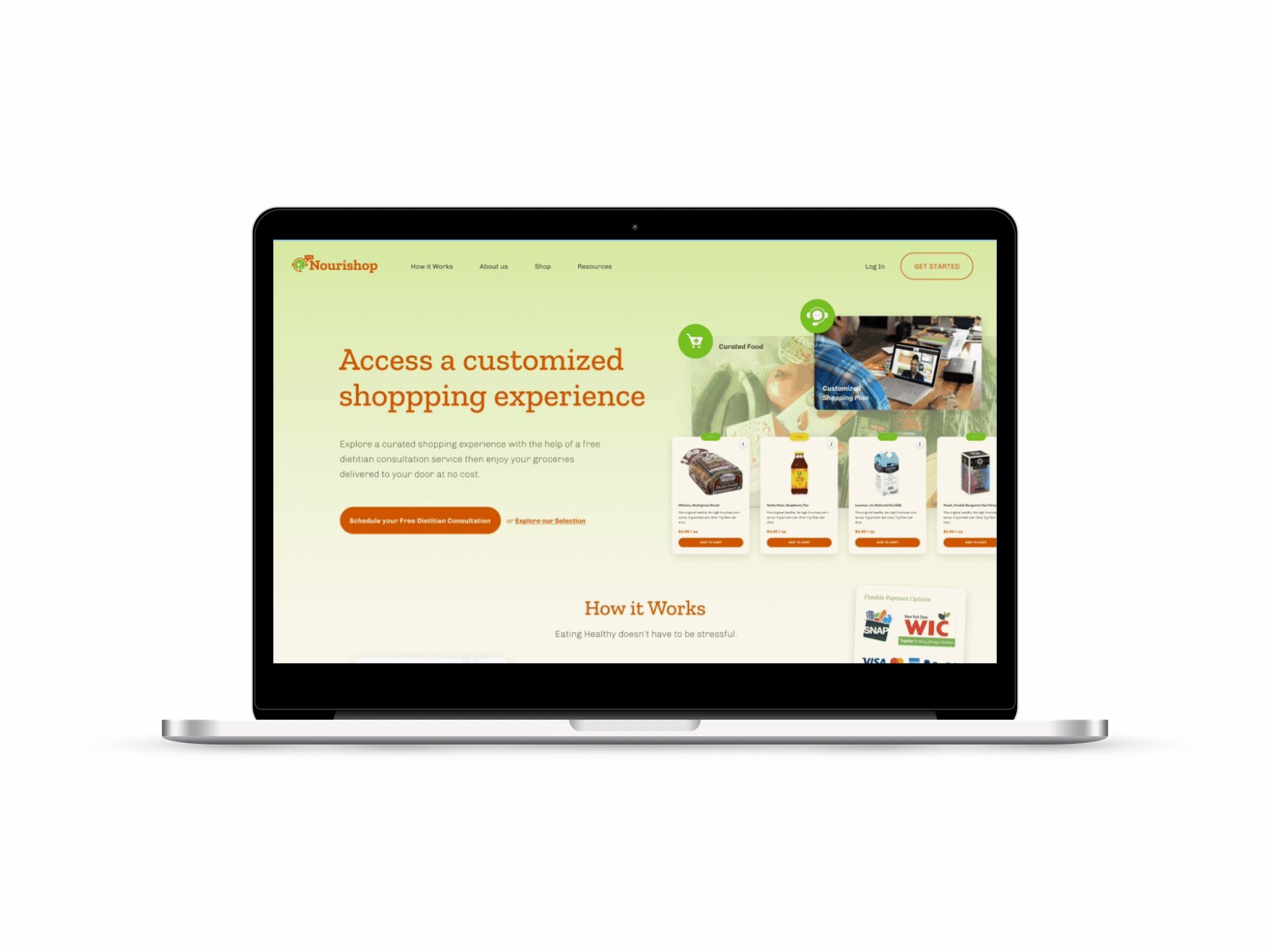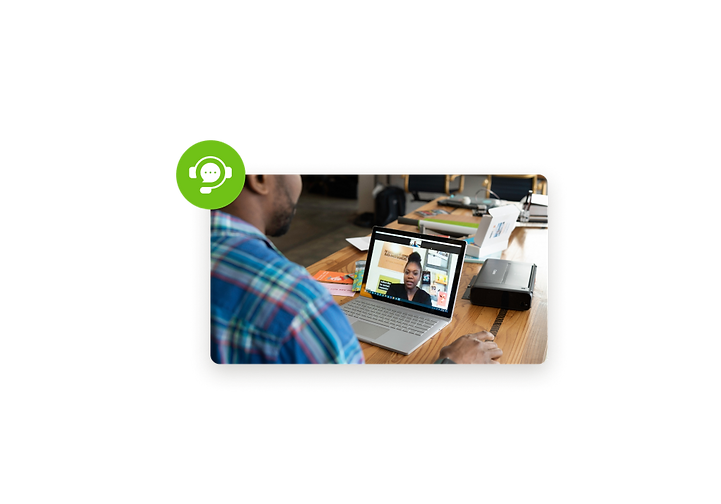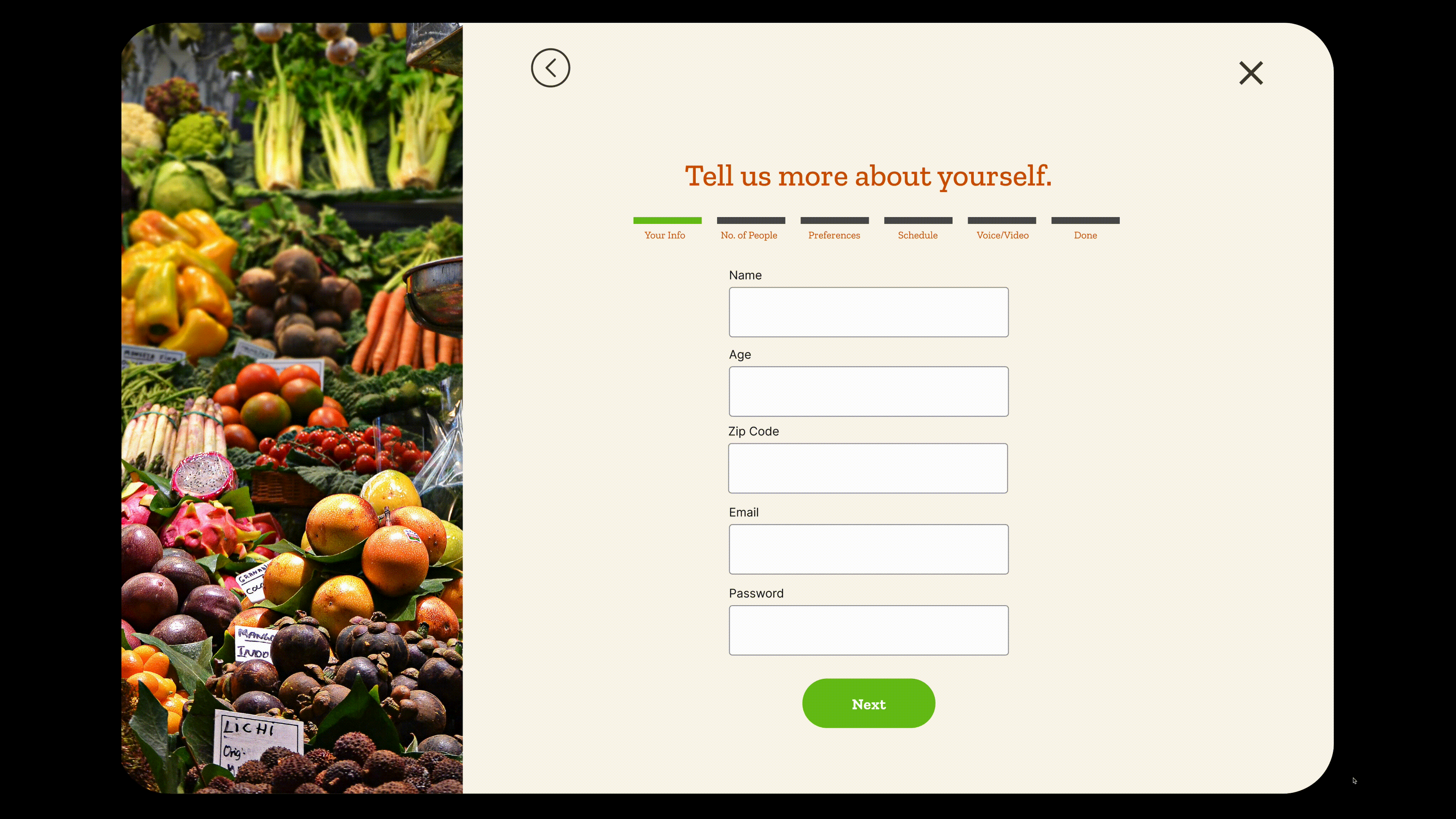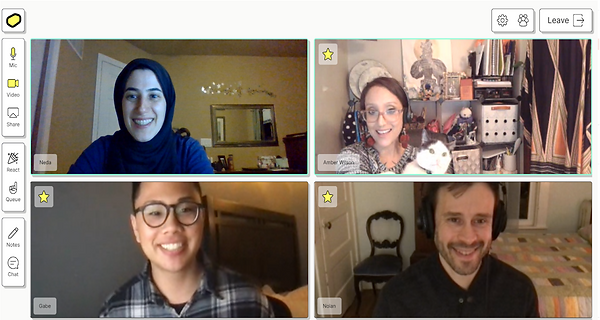.png)
Project Overview
Context
April 2021
UX Wizards
Remote UX Challenge/Hackathon
Team
4 UX Designers
Amber Wilson
Neda Behfar
Nolan Stewart
Gabriel Estevez
Role
UX Designer
UX Researcher
Timeline
3 Days
Challenge
Our challenge was to design a solution that addresses global food insecurity.
Impact
More than a quarter of the world (26.4%) experiences food insecurity according to the Food and Agricultural Organization. Food insecurity is a deeply-rooted issue and affects many working-class families. In 2021, 42 million people could experience food insecurity due to the pandemic. (feedingamerica.org)
Outcome
Within a span of 3 days my team was able to propose a product that effectively supports food security in a scalable fashion. By way of a responsive website combined with a personal service to aid with nutritional education, we were able to come up with a unique value proposition to help the fight against food insecurity.
Results
Grand Prize Winner
Best Research
Best Presentation

Problem
How might we inform food desert residents about healthy food choices?
How might we reduce travel times to the grocery store for people living in food deserts?
Solution
Nourishop, a responsive website that combines free food delivery from the closest grocery store with a registered dietitian. This creates a customized food shopping experience through curated options and provides nutritional education for all.

Key Features

Connect with a Dietitian
-
Users are instantly connected to a dietitian after sign up
-
Consultation calls can give users a better sense of how to tackle their eating habits
-
Available to ALL users
Customized Shopping

_edited.png)
-
Users are presented with an array of food options that fit their nutritional plan
-
Users can make educated decisions with the help of our "stop light" feature
-
Gives users the freedom of choice but with suggested products
Thoughtful Onboarding

-
Giving the users the power to choose starts with the onboarding flow
-
Users are encouraged to choose which preferences fit the best for their needs
-
Users can feel empowered with thoughtful copy to make this experiences their own
Why? Our Research Process

In our design process, my team consistently attacked the problem through a robust research analysis.
Our Research process consisted of:



One Interview with a
Registered Dietitian
Second-hand research via articles and videos
Affinity mapping & Mind mapping
In our heavy research process, my team and I honed in on what it meant to be food insecure.
More specifically, we focused on Food Deserts, a key hot spot for food insecurity issues in the US.
Getting to know our target audience: Primary house-hold food shoppers
The ability to get first-hand research from user interviews was our biggest constraint due to the short timeline and access to people who lived in food deserts.
Since this could be viewed as a sensitive subject and to alleviate user bias we opted not to build a persona.
Instead, we created a proto-persona summarized through second-hand research from interviews, articles, and research papers.
Meet our Proto-Persona
Role: Primary food shopper for their family
Needs: To help define what healthy food is
Goals: To feed their family
Frustrations & Pain Points: Long travel times to access fresh food
Location: Food desert in NYC and low income area

Key quotes from Secondhand Research
“Before I had kids I used to be a big food junkie, lots of candy, lots of soda, but then I realized that in order to raise healthy kids I would have to start changing my lifestyle.”
“I remember all I see as a kid, was McDonalds, Wendys, and Popeye’s, those were the options. Even the bodegas back in the days didn’t have salads and smoothies like they do nowadays.”

Food Desert: an area that has limited access to affordable and nutritious food, in contrast with an area with higher access to supermarkets or vegetable shops with fresh foods, which is called a food oasis.

So how did we get to Nourishop as the final solution? A pivot!
Are users actually buying healthy foods if given the option?
Bringing a supermarket into a food desert changed the resident's habits by only 3%, why is that?
How did we pivot? Research again...
Food insecurity isn't just about access or financial situations, so we dug deeper.
Do users know what healthy food is?
Not really, we dug deeper and found many misconceptions.
With more research we found...
63%

of people think they must sacrifice fun to eat healthy
think they'd have to reduce restaurant outings to afford healthier food

30%

1 in 5 Americans
think they'd have to give up entertainment subscriptions (Netflix, Spotify, etc.) to maintain a healthy diet

Food insecurity goes BEYOND just access
Education matters too!
A key turning point in our research process, people are unaware of the value in nutritional foods and need a way to put that knowledge into practice.
The Key Player: A Registered Dietitian
We were able to get our hands on a subject matter expert aka a Registered Dietitian.
The takeaways:
-
Dietitians will be happy to volunteer time
-
Education and guidance are always the best way to help people
-
Services such as Meals on Wheels to deliver food and other services would be happy to partner with other food related entities
-
To be legally compliant you may give general healthy advice on nutrition to improve health outcomes
So what?
Our interview with the Registered Dietitian gave us insight into how viable this solution would be if we were to implement it!
He also was able to backup our research into how valuable this would be for communities experiencing food insecurity.
Overall, this interview was crucial into validating our assumptions and going forward with our solution.
Looking back & taking it forward, Retrospect
-
Thought leadership and listening was our superpower: we constantly asked questions and challenged one another to think deeper
-
Not settling for a mediocre solution: we tossed around many ideas throughout the project and we strived for a UVP
-
Don't underestimate the power of UX Research: defining the problem and solution to the max helped our team tremendously